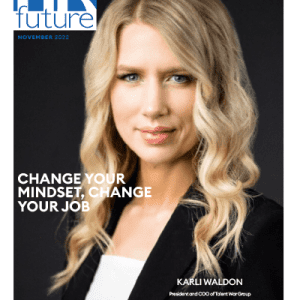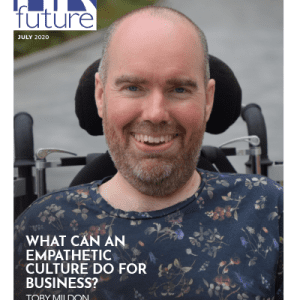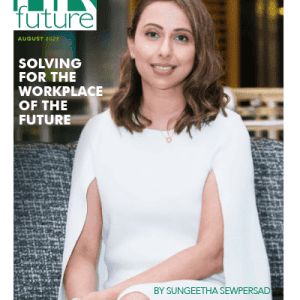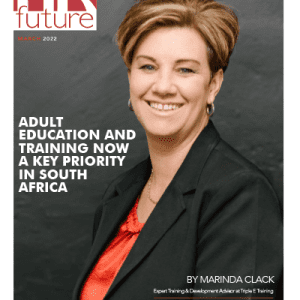How can visual data storytelling help HR leaders navigate talent management and workforce mobility?
.gif)
Whether you’re an employer, policymaker, educator, or student, complex data has become a growing, sometimes overwhelming part of working life. Knowing where to find it, how to gather it, analyse it, reframe it, and present it in a way that HR practitioners or advisers can relate to is a huge challenge.
This is why data visualisation and data storytelling are increasingly useful business tools. They tap into our visual processing skills to visually explain large, complex volumes of data.
And data visualisation has remarkable untapped value in helping to shape and solve real-world challenges in workforce development, levelled-up corporate practices and enhanced upskilling.
From basic pie charts and bar graphs to interactive heatmaps and 3D plots, visualisations can hold the key to unlocking the potential hidden within vast HR datasets. HR and L&D leaders can make more informed choices about recruitment, training, parity, pay, employee engagement and career
development opportunities.
The future of work requires HR to understand and act on the patterns, trends and threats in the data that captures our working world behaviour. And the value of data literacy is continuing to increase in companies all over the world. Research by Forrester predicts that 70% of employees are expected to work heavily with data by 2025 — up from 40% in 2018.
If HR can engage with data ‘stories’ in ways that don’t involve struggling through raw lines of data, it becomes easier to identify skills gaps, assess workforce demographics, predict future workforce needs, and create plans to meet those needs.
Why now?
HR has a lot to contend with. Tech advancements mean that innovation is happening faster than skills development, and this means there's a growing skills gap and a need for upskilling workforces. The world is fractured between globalisation and onshoring of industries, which means the necessary skills and jobs for those industries just aren’t there right now.
The nature of work is constantly evolving: whether it’s remote teams, greater automation and or the gig economy. Organisations need to adapt and understand what this means to them. There is so much data available in the world of workforce development. Unlocking it and making it accessible, clear and exciting isn’t easy, but it’s certainly possible, and it’s a fast-growing practice.
Data storytelling in practice
Let’s zone in on some examples of how data stories can uncover workforce trends and help HR leaders make more informed decisions. In doing so, let’s not forget that when data is transformed into visualisations, it not only makes complex information more understandable and enjoyable to explore, it has the power to unearth outliers. These outliers help us to find insight, patterns and observations that can improve our business practice.
Workforce training – uncovered
Reframing complex data and presenting it in an accessible, visual form also allows us to be more curious. In 2023, infogr8 collaborated with Harvard University’s Project on Workforce to create the Workforce Almanac data portal. It’s a multi-year research project focused on understanding short-term, post-high school workforce training provision.
In the US, a ‘good job’ requires post-secondary education. Usually that means a university degree. But nearly ⅓ of American workers, 62% of Black and 55% of Latinx workers are skilled through routes other than a degree. The team at Harvard were curious. Where is this important cohort of the American workforce getting their professional education and training?
It is likely to be the workforce development sector. But so little of this sector is known because it’s fragmented in silos. An interactive data portal felt like an ideal way to bridge those silos.
The team mapped out nearly 17,000 data points of workforce training providers to form a clearer picture of the relationships and dependencies. The data portal broke down the silos by illuminating where providers are located, in order to measure their key characteristics.
Employers urgently need to close relevant skills gaps, either through attracting newly trained talent or by reskilling/upskilling their existing workers. The Workforce Almanac represents a missing piece of the skills-gap puzzle and a timely addition to the landscape of workforce development.
Policymakers can now integrate the data to improve decision-making on resource allocation and training providers can explore the coverage to benchmark and collaborate.
Workforce mobility – reframed
Upward mobility is a cornerstone of the American Dream. But while 90% of children born in 1940s America went on to out-earn their parents, the same was true for only half of those born in the 1980s.
The American Opportunity Index is the first attempt to measure worker mobility in the US. It seeks to answer: which are the best US companies for worker advancement, and why?
The Schultz Family Foundation, the Burning Glass Institute and the Future of Work Project at Harvard Business School conducted big-data analysis of career histories, job postings and salary sources from nearly 400 of the US’s largest publicly listed companies. The result is the most comprehensive economic mobility index in the US, using a range of public labour-market data sources to assess the progress of almost five million employees over a five-year period.
The interactive data portal created by infogr8 unlocks and benchmarks many layers of this data, making typical career pathway patterns more accessible to employers and workers than ever before. The latest index (V2 launched in November 2023) contains significant new employment metrics – particularly around parity – with 12 in total.

The portal is the only measure of employer quality to evaluate what really happens to workers at large companies over time and how well they manage their people. Unlike other studies, it doesn’t rely on company reporting.
Using the public data, it assesses company behaviour on hiring, pay, promotion, parity, and culture and identifies the 100 best firms for each, as well as the 100 best firms overall to work for.
Dynamic data visualisations reveal enlightening new insights into worker mobility, equity, pay, promotion and career trajectory experience by people who’ve worked in these companies.
The interactivity level of the Index certainly moves the bar in allowing employers and workers to drill down in several directions into how well corporate America is serving its employees and where the opportunities for progression really lie, particularly for people without degrees.
The challenge was to illuminate this data in clear, accessible and interactive ways, shining a spotlight on the individual merits of those companies leading the way.
The Index’s dynamic scorecard and interactive visualisations help HR and L&D leaders, workers and jobseekers explore how huge brands are investing in and progressing their talent.
Cutting through complexity
There’s a challenge ahead to unlock our people-related data to reveal its true stories in ways that everyone can understand, regardless of their level of data literacy. Sometimes we need data to inform us of macro behaviour patterns, sometimes to educate us on a specific topic, and other times to engage groups of staff, customers or partners about the people stories we have to tell.
Doing this in interactive ways that help us explore new levels is an exciting movement to be part of. It’s a timely moment for companies large and small across all sectors, public and private to enhance their data strategies.
It’s the next logical step towards interpreting and showcasing complex data in simpler, inspiring ways and making more informed decisions that help them to shine as the smartest, most insightful companies to work for.
Jake Madsen works with employers, education bodies and academia to unlock the value and potential of workforce data through creative data visualisation. His work as head of EdTech at infogr8 unlocks a range of labour data, education and community insights to help working professionals make better decisions.








